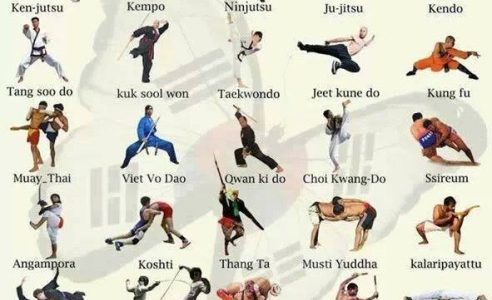Recognizing The Basic Distinctions Between Conventional Martial Arts And Modern Battle Sports
Recognizing The Basic Distinctions Between Conventional Martial Arts And Modern Battle Sports
Blog Article
read this post here -Ware Snedker
When you consider martial arts, do you lean extra toward the typical techniques or the modern-day fight sporting activities? Each path offers distinct advantages and experiences, shaped by their philosophies and training methods. Conventional martial arts stress individual development and technique, while modern battle sporting activities focus on competition and efficiency. Recognizing these differences can assist you in choosing the ideal approach for your journey. Yet how do these distinctions manifest in training and viewpoint?
The Approach and History Behind Standard Martial arts
While many people associate martial arts with physical battle, the viewpoint and history behind conventional martial arts run much deeper. You'll find that these techniques highlight individual development, discipline, and regard.
Stemming from old techniques, traditional martial arts were usually developed for Self-Defense and spiritual development. pop over to this site embody concepts such as equilibrium, consistency, and self-discipline, assisting specialists beyond simple battling skills.
As you train, you'll not only learn methods but also get understandings into the society and worths that shaped these arts. The rituals and customs, typically given via generations, foster a sense of neighborhood and belonging.
The Competitive Nature of Modern Combat Sports
Modern fight sporting activities have actually changed the landscape of martial arts right into an extremely affordable sector, where professional athletes take on in a test of ability, technique, and endurance.
You'll discover that competitions are typically organized with strict guidelines and regulations, ensuring fair game and safety and security. These occasions bring in huge target markets, sustaining the excitement and strength of competitions.
Athletes educate rigorously, not just for physical expertise but likewise for mental toughness, understanding that every information counts in the ring. The adrenaline thrill throughout competitions is palpable, as boxers push their limits to declare success.
Fans appreciate the athleticism and artistry entailed, making modern fight sports a thrilling spectacle that continues to develop and mesmerize enthusiasts around the globe.
Training Approaches and Techniques: A Relative Analysis
The affordable atmosphere of modern-day fight sporting activities needs cutting-edge training methods that differ considerably from typical martial arts.
In contemporary training, you'll concentrate on particular methods, competing, and conditioning, commonly utilizing drills that simulate genuine fight circumstances. https://elementsmartialartskids09753.blogdanica.com/35023446/discovering-the-different-styles-of-youth-fighting-style-which-is-right-for-your-youngster 'll see an emphasis on quantifiable performance and constant competitors to assess your abilities.
In contrast, traditional martial arts prioritize kinds, katas, and thoughtful teachings, frequently emphasizing technique and respect over competition.
Training is usually less extreme and may entail recurring technique instead of real-time sparring.
While both strategies develop skill and physical fitness, modern combat sports give an extra dynamic and versatile training setting, preparing you for instant difficulties in the ring or cage.
Select the course that lines up with your goals and passions.
Verdict
In picking between standard martial arts and modern combat sports, it really comes down to what you value most. If you're seeking personal growth, technique, and a sense of community, conventional arts could be your ideal fit. Yet if you thrive on competition and real-time obstacles, contemporary battle sporting activities could be the means to go. Ultimately, both paths use unique advantages, so it's everything about straightening your training with your personal goals and interests.
